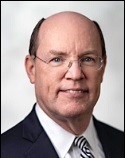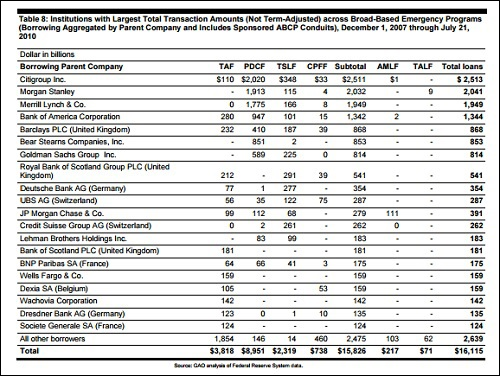Wall Street Watchdog Assails Fed’s Stress Tests of Mega Banks as “Toothless” – Provides a Wakeup Call to Biden Administration
By Pam Martens and Russ Martens: July 2, 2021 ~
Dennis Kelleher, the co-founder, President and CEO of the nonpartisan Wall Street watchdog, Better Markets, has issued a scathing rebuke of the Federal Reserve’s so-called “stress tests” of the mega banks on Wall Street, calling them “toothless.”
Kelleher’s criticisms revolve around two key points. The Fed is preordaining the outcome of the tests by (1) pumping up the banks’ capital with financial handouts prior to the tests and (2) by removing key aspects of the stress tests that would negatively impact the outcome.
Kelleher writes that the Fed’s “unprecedented” support to financial markets and the economy since last March was $4 trillion and “has materially helped to bolster bank balance sheets and capital levels.” But Kelleher is overlooking the more than $9 trillion in cumulative repo loans that the Fed showered on the trading units of these mega Wall Street banks, at far below market interest rates, from September 17, 2019 through early July of 2020, the month that the Fed simply stopped reporting this handout to the Wall Street banks.
This is also how the Fed has ginned up the tests, writes Kelleher:
“Making matters worse, the stress test program has been seriously weakened under the Powell chairmanship by, among other things, the removal of two key components: the inclusion of dividend payouts and a growing balance sheet. If those factors were included, as they should have been, the banks would have had materially lower post-stress capital ratios.”
Kelleher says the Fed “trumpeted” the fact that all of the banks passed the stress tests to justify letting the banks launch a “flood of dividends and share buybacks likely to approach $200 billion and exceed bank earnings by as much as 167%.”
When banks are paying out more than they’re earning, it implies a “reduction in capital, making the banking system less safe,” Better Markets notes in a related five-page fact sheet. The fact sheet includes this warning for Powell:
“History may judge the Fed’s decisions to deregulate and weaken the stress tests as to allow such outsized, capital-depleting payouts to be as dangerous as many of the Fed’s actions were before the 2008 GFC [Global Financial Crisis], which made that financial crash much worse, if not inevitable, and all but guaranteed the need for taxpayers to bailout Wall Street’s biggest banks.”
This would not be the first time that the Wall Street mega banks paid out more in dividends and share buybacks than their net income. In fact, they’ve been doing it for years under the unwatchful eye of their captured regulator, the Fed.
Bloomberg News reporters Lisa Lee and Shahien Nasiripour broke the story in June of last year that Bank of America, Citigroup, JPMorgan Chase and Wells Fargo had, since 2017, spent more on dividends and share buybacks than they had earned. The reporters wrote:
“From the start of 2017 through March, the four banks cumulatively returned about $1.26 to shareholders for every $1 they reported in net income, according to data compiled by Bloomberg. Citigroup returned almost twice as much money to its stockholders as it earned, according to the data, which includes dividends on preferred shares. The banks declined to comment.”
According to an audit conducted by the Government Accountability Office (GAO), those four banks named above that are paying out more to shareholders than they are earning received the following amounts in cumulative secret loans from the Fed, at interest rates of almost zero, from 2007 to 2010: (See chart below.)
Citigroup $2.5 trillion
Bank of America $1.3 trillion
JPMorgan Chase $391 billion
Wells Fargo $159 billion
Where exactly are all of these trillions of dollars of bailouts to the Wall Street mega banks coming from? (You should probably sit down any hot liquids you are drinking before you read the answer to that question.)
The money is coming from the same regional arm of the Federal Reserve, the Federal Reserve Bank of New York (New York Fed), that bailed out these banks and their foreign counterparties during the last financial crisis. The New York Fed is permitted by Congress to electronically create this money out of thin air. The Fed released a video with Senior Adviser, Steve Meyer, explaining how it’s done: (See 3:42 minutes on the video.) In this example Meyer is talking about how the Fed creates money for its QE purchases of bonds from the Wall Street banks. It works the same way for the Fed’s collateralized loans to Wall Street.
Meyer explains:
“You may wonder how the Fed pays for the bonds and other securities it buys. The Fed does not pay with paper money. Instead, the Fed pays the sellers’ bank using newly created electronic funds, and the bank adds those funds to the sellers’ account. The seller can spend the funds or can simply leave them in the bank. If the funds stay in the bank, then the bank can increase its lending, purchase more assets, or build up the reserves it holds on deposit at the Fed. More broadly, the Fed’s securities purchases increase the total amount of reserves that the banking system keeps at the Fed.
“Whether the Fed’s purchases lead to an increase in the amount of money circulating in the economy depends on what banks do with the new reserves and on what sellers do with the funds they receive.”
What the mega banks are doing with a lot of this cheap, no-strings attached money from the Fed is to loan out their balance sheets to hedge funds to make insanely leveraged trades in risky stocks and derivatives.
And exactly what is the structure of the New York Fed? It’s one of the 12 regional Federal Reserve Banks but it’s privately owned by the mega banks that it’s propping up with all these trillions of dollars in loans.
The largest shareowners of the New York Fed are the following five Wall Street banks: JPMorgan Chase, Citigroup, Goldman Sachs, Morgan Stanley, and Bank of New York Mellon. Those five banks represent two-thirds of the eight Global Systemically Important Banks (G-SIBs) in the United States. The other three G-SIBs are Bank of America, a shareowner in the Richmond Fed; Wells Fargo, a shareowner of the San Francisco Fed; and State Street, a shareowner in the Boston Fed.
The final element of this Faustian bargain is that the New York Fed contracts out the operations of its bailout programs to the very banks taking money from the bailouts.
What’s happening between the Wall Street mega banks today and the Fed is a replay of the dynamics that led to the 2008 crisis. The question is, will the Biden administration take action in time to thwart another economic crash that America can ill afford?
Related Articles:
Three Federal Studies Show Fed’s Stress Tests of Big Banks Are Just a Placebo


